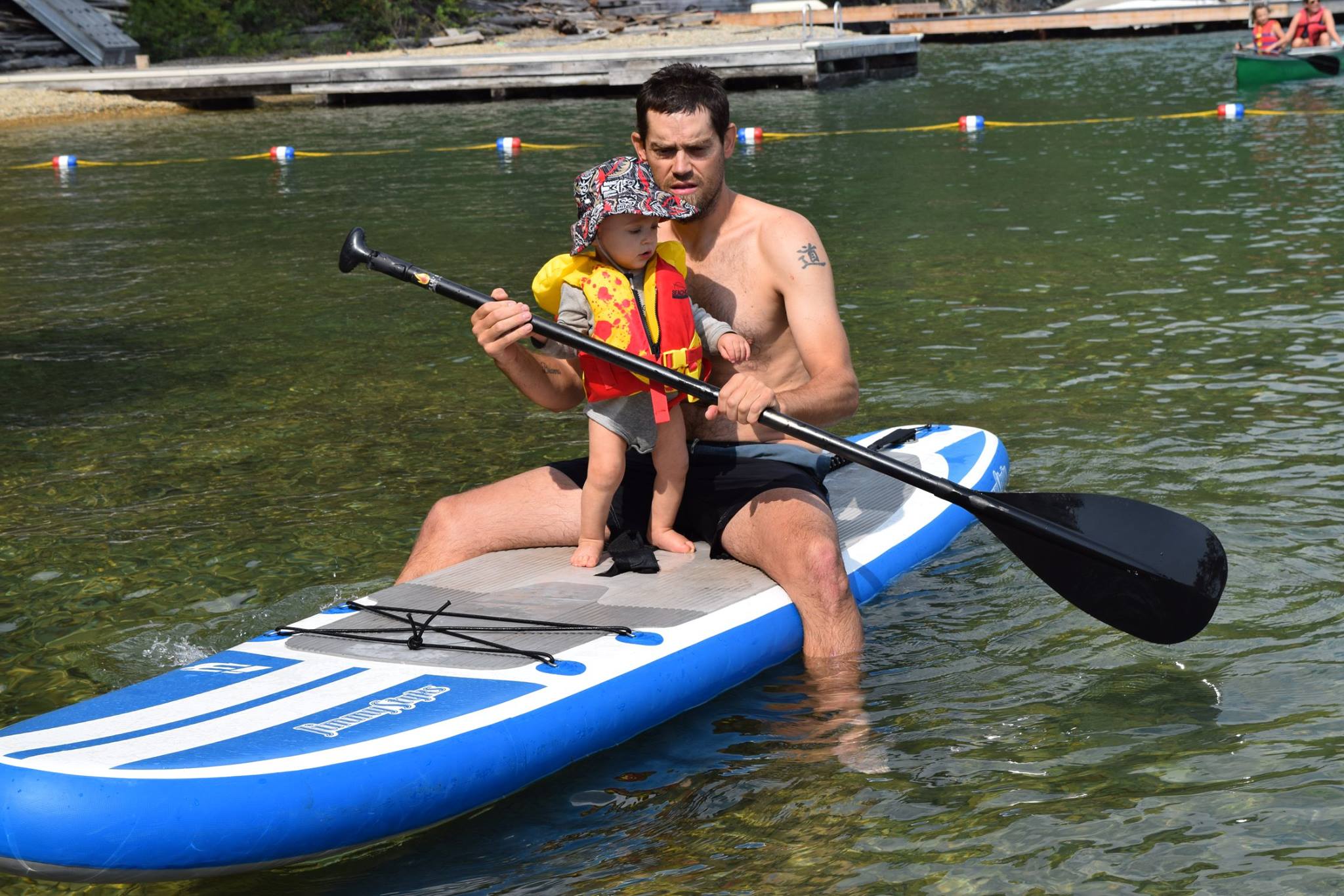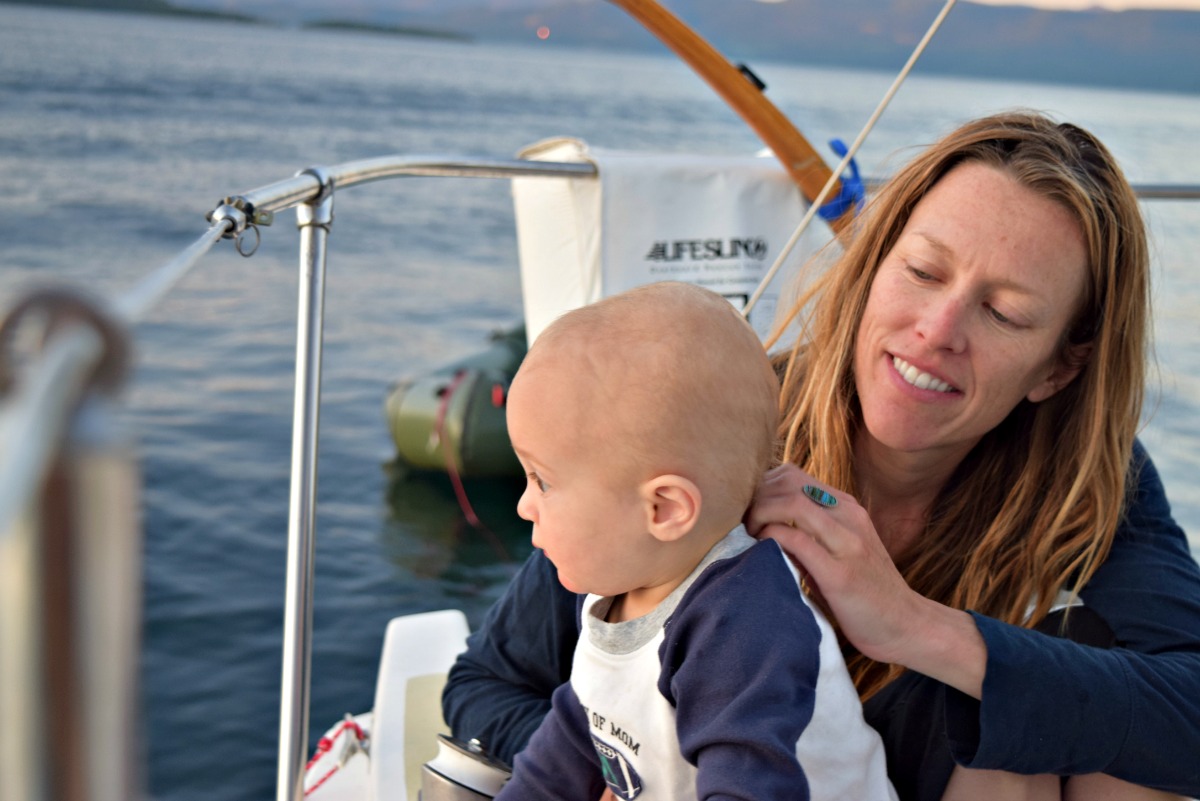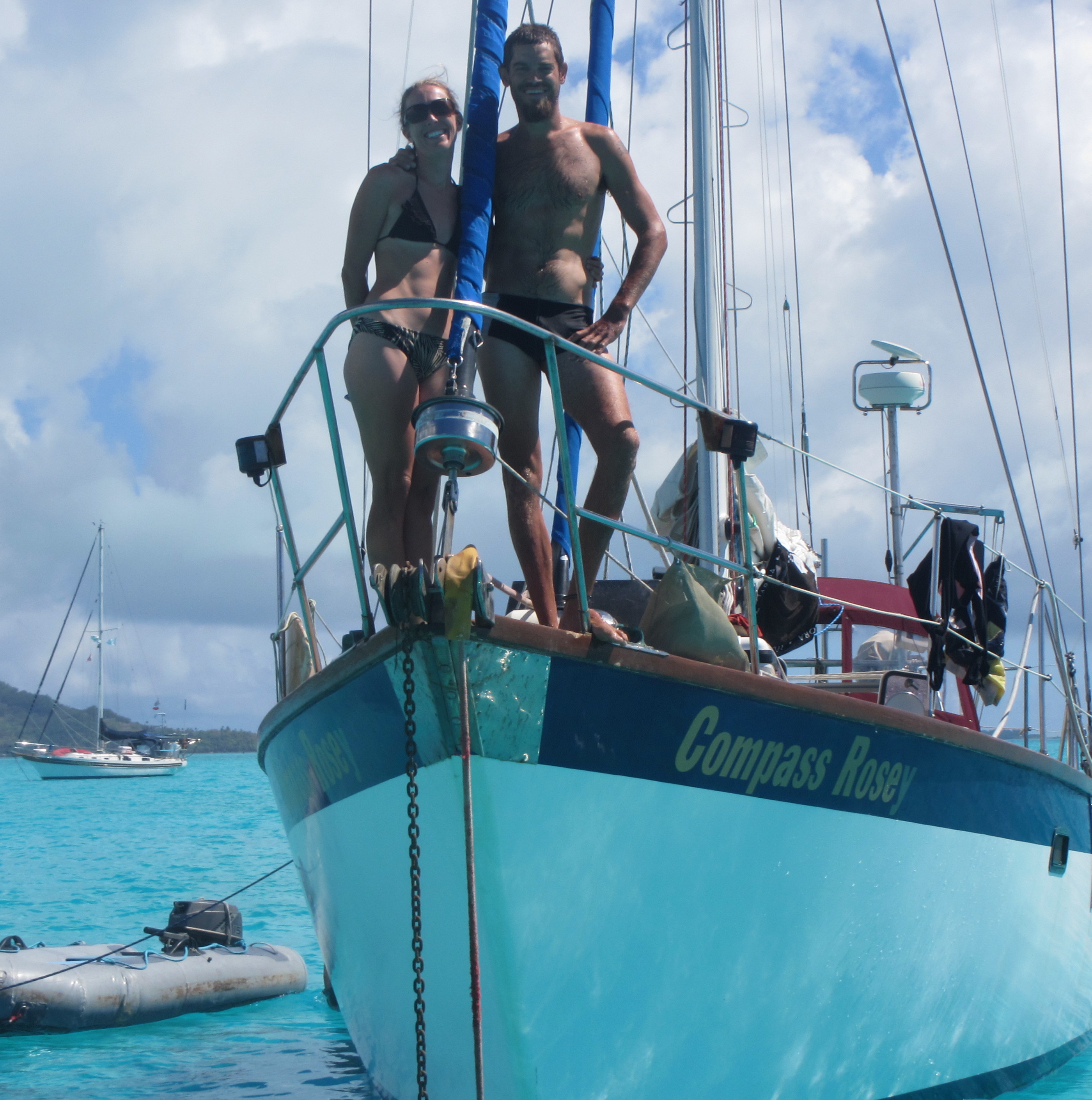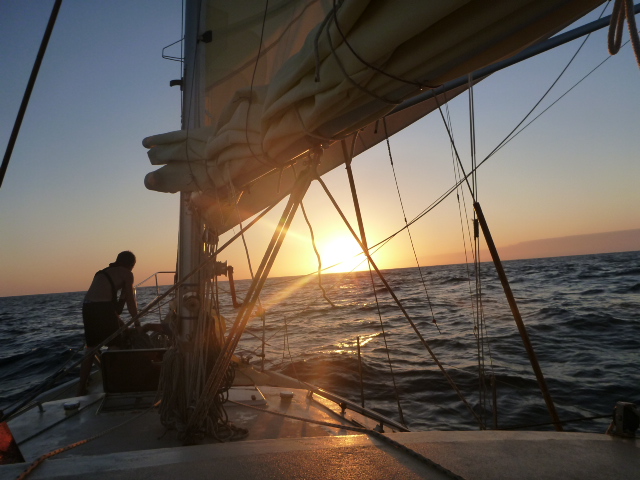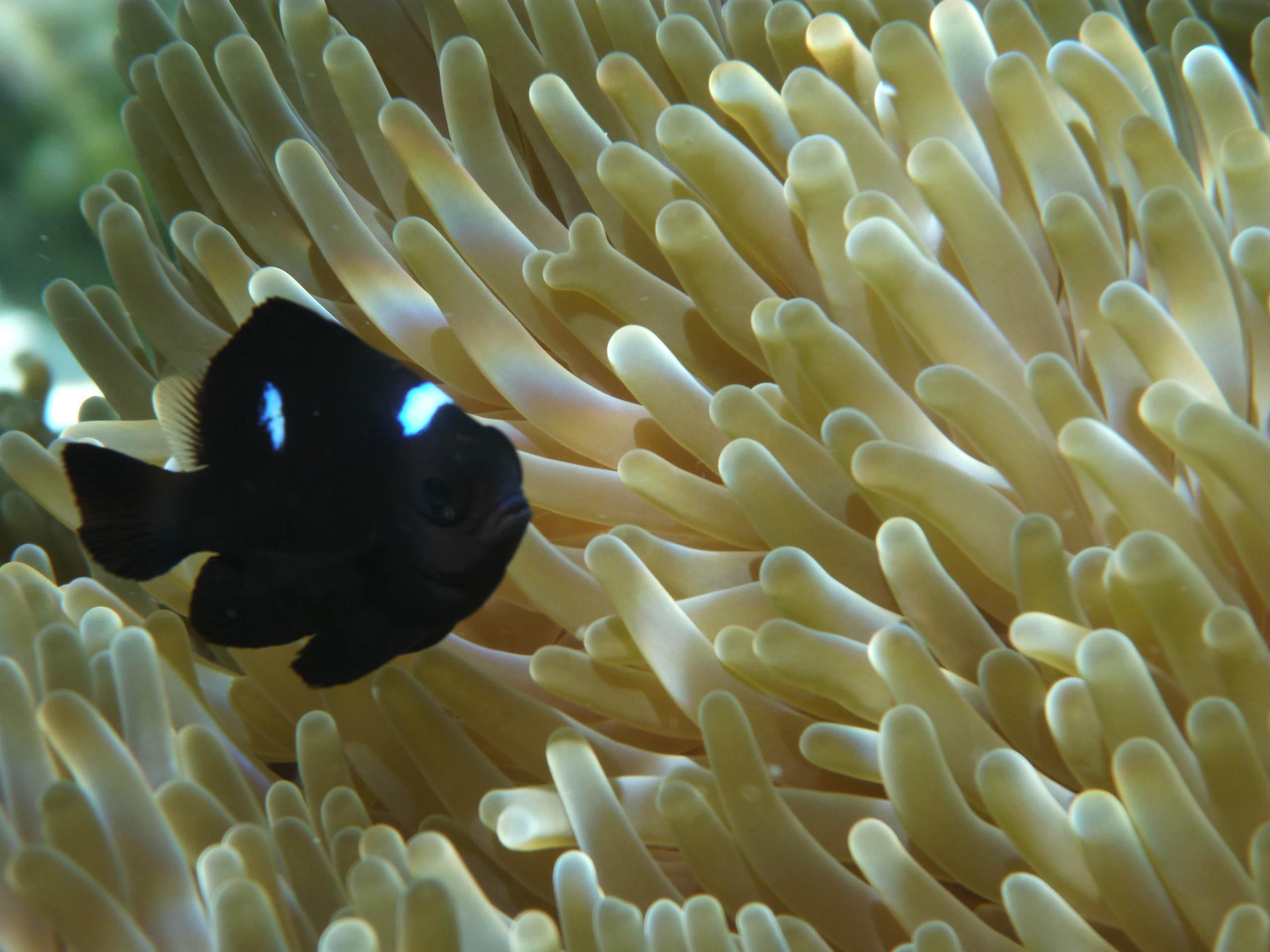Welcome To Paradise (Half Of The Time)
Sailing with (or without) kids isn’t always picture-perfect. But the rain and bugs and broken bits are worth it for the good days.
It’s New Year’s Eve, and we’ve just anchored our sailboat in six feet of clear green water a stone’s throw from a couple of deserted islands. But rather than kicking back with a cocktail to watch the sunset, Rob is sweating as he dissects the outboard motor to figure out why it’s overheating. I’m wrestling a pen away from the screaming toddler, who’s tattooed herself in blue ink from forehead to naval and is melting down in her fourth tantrum of the afternoon. Talon is jumping up and down while making fart noises and asking for more hot dogs, ready to run a marathon. Meanwhile, the wind has died so the mosquitoes descend.
Welcome to paradise.

Thank goodness we knew what we were getting into. Since Rob and I spent a year crewing on boats in the Pacific Ocean and are seasoned adventure travelers, we know that the ratio of good to not-so-good days is roughly one to one. Just like regular life, really. Except warmer and wetter.
When we stepped aboard Mikat (a 36-foot 2006 Jaguar catamaran sailboat that we bought in partnership with two other families this past October), everyone was awash in glee. Six weeks in the Bahamas on a boat! Our dreams come true! Sun and sand and colorful coral reefs. Time to be present and together as a family. Freedom from offices and errands and urban distractions. A space where shoes and clothing are optional.
We were fully aware that all of that magic comes with (many) grains of salt. Here are a few snapshots from our first two weeks aboard to give you a feel for the rhythm:

Snorkeling
Talon swims beside me over a shallow reef decorated in purple and gold fans. He stops to point excitedly at a pair of parrotfish, their rainbow colors swirling as they circle through a cave in the reef. Then we turn and see a spotted eagle ray gliding past, six feet across at her wingtips with intricate white rings and dots across the velvet black body, the slow flap of her peaceful swim settling into my bones.
Just one month before we left for the Bahamas, Talon was terrified to put his face in the water. But now he’s jumping off the boat alone ten times a day, duck-diving with his fins, and the first one to ask to go snorkeling. And Lyra. She leaps off the transom into our arms, and climbs up and down the swim ladder herself. When we snorkel, she kicks along in her life jacket beside us, giggling at the waves.
Leaks
It’s been raining most of the past 24 hours. We rotate less-sodden towels around the salon to catch a half-dozen leaks, constantly moving papers and books and clothes to keep them semi-dry. At night we can’t open the windows for air, so the sheets feel like draping wet paper towels over our clammy skin. Mildew is growing in nooks and crannies, coating clothes in a fuzz of pale blue. Everyone is restless and impatient. The floors—and our moods—are coated in a slimy film of saltwater and mist. My fingers have been pruned all day.

The Bow
At sunrise and sunset the kids play on the bow, jumping on the “trampoline” of netting between the two hulls. They climb up the roof and into the mainsail, pretending to sleep. Talon launches himself back and forth on a swing that Rob made out of an old fishing net we found washed up on shore. Lyra balances atop the bow set, suspended over water accented with white sand so so bright it’s nearly silver. While most ocean views are infinite shades of blue, the Exuma Islands are heavy on the greens: turquoise, jade, lime.
Sailing
We woke to a side swell rocking the boat in a nauseating teeter-totter. Before the sun’s even up, Rob and I are ready to pull anchor and get outta dodge. But the port engine won’t start, sputtering only black exhaust. Rob miraculously fixes it. But then the starboard engine won’t restart.
We head out with one engine, underestimating the wind and waves. The main halyard twists like a snake, then the traveler jams, then a shackle breaks, and we have too much sail up and I can’t muscle in the furling line. Waves crash repeatedly into the bridge, each one sounding like a canon shot through our hull. Sea spray coats the deck as we try to troubleshoot the blooming problems. Lyra is crying while strapped to my back and Talon is moaning he’s seasick, all while the sails are flogging louder than a jet plane at takeoff. We’re only making 3 knots into the stiff wind, so it takes three hours until we collapse in a heap at a calm anchorage.
But of course, there’s no resting. Instead, we must feed the kids endless snacks, settle disputes over the few favorite toys, keep them from falling into the ocean or sunburning to a crisp. Our only hour of calm is the one between their bedtime and ours.
Hokey-Pokey
I stretch into yoga poses on the beach in front of Mikat, thrilled that we’re the only people for miles in any direction. Talon is building complicated sand castles near the water, making them “stronger than the ocean.” Lyra is beside him, babbling as she fills and empties plastic bottles she’s collected, turning trash into treasure. Rob is stalking the beach with a fly rod in hand, wetsuit still on from his spearfishing expedition around the point. I wander over to the kids, and we dance the hokey-pokey in the buff.


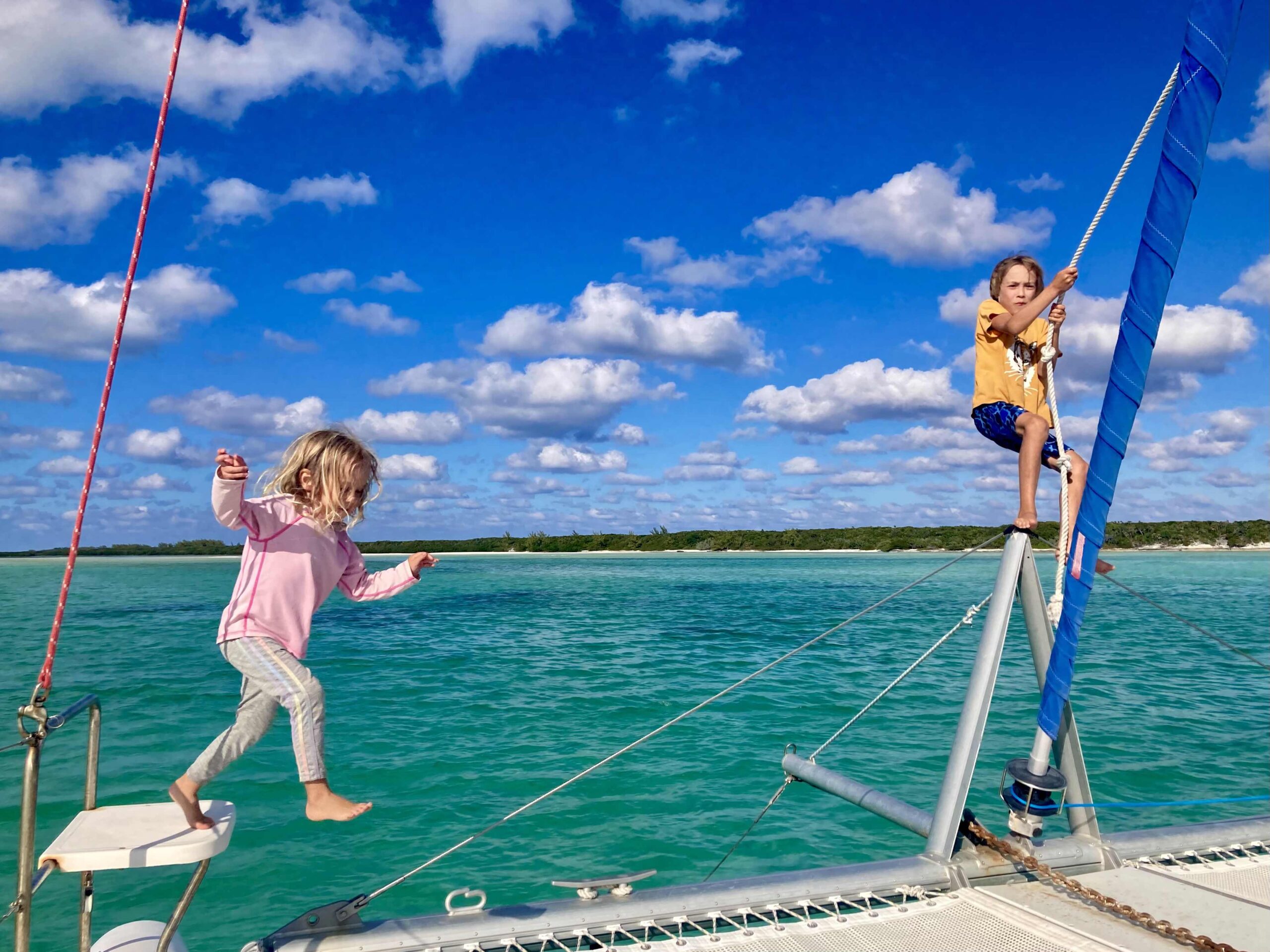







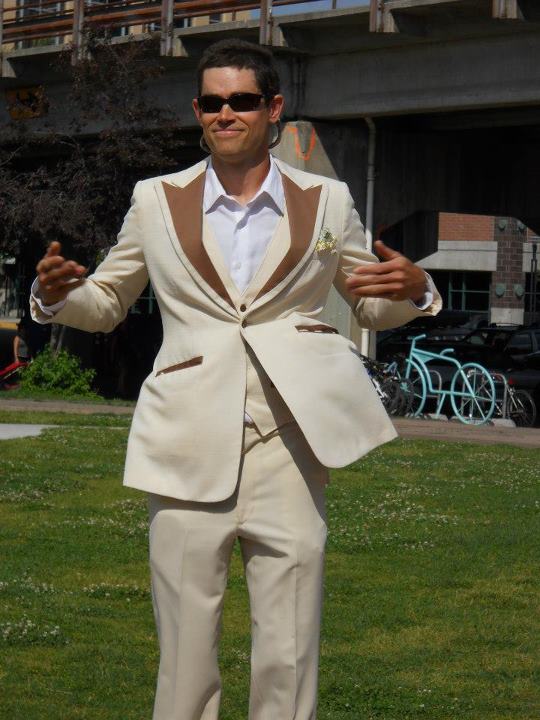







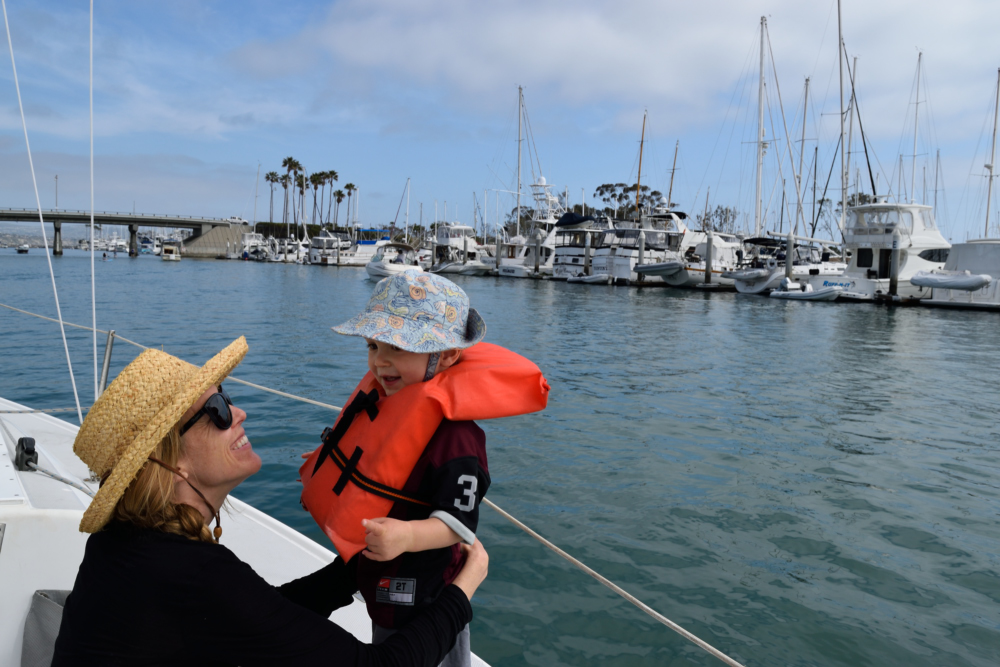













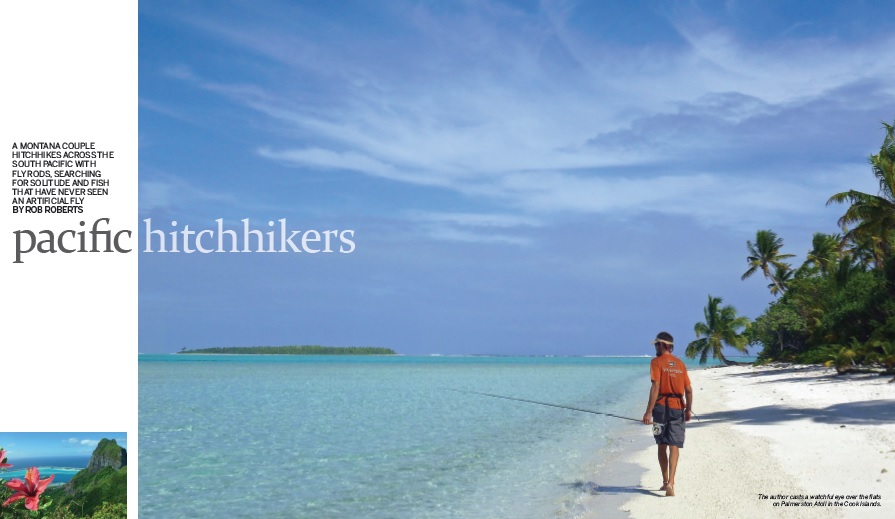


 Read the rest of the story as a PDF.
Read the rest of the story as a PDF.